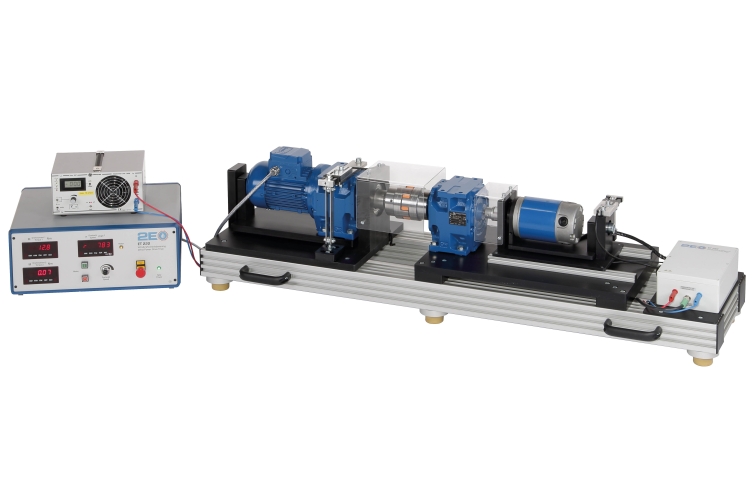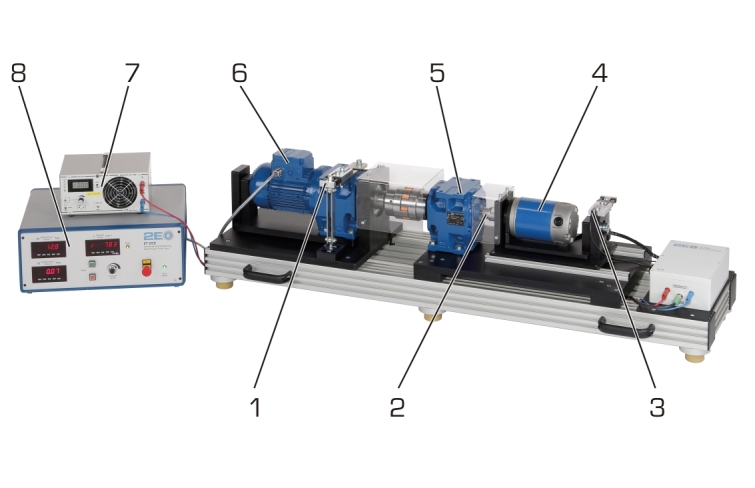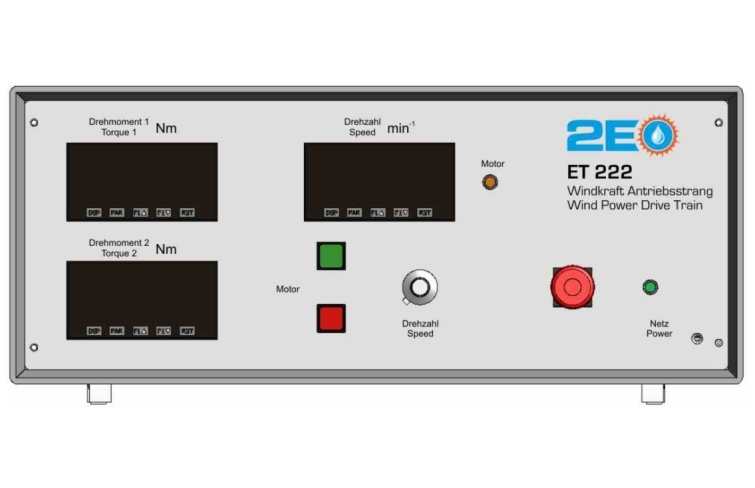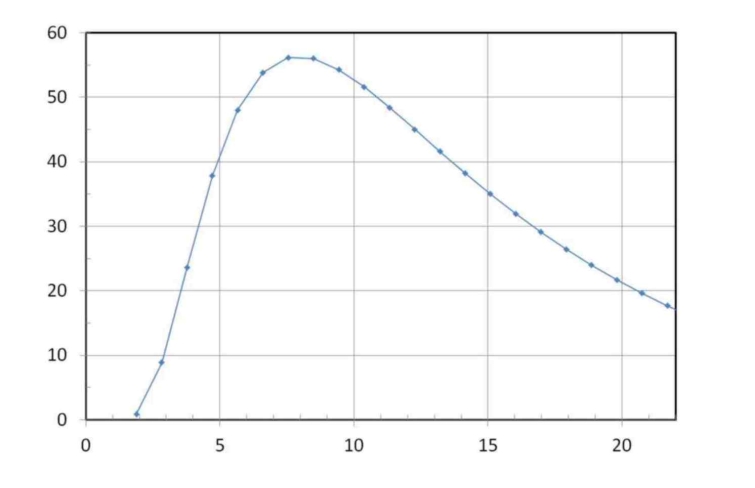Modern wind turbines should be optimally adapted to the wind available at their location and allow efficient operating conditions. In addition to the wind rotor itself, components of the drive train such as the transmission and the electric generator are crucial.
The ET 222 experimental unit contains a typical wind power drive train at laboratory scale, which is driven by an electric motor. The motor enables low speeds with high torque. This simulates a typical slowly rotating wind rotor. The speed can be adjusted.
The drive train consists of the slow-rotating drive side, the fast-rotating generator side and a three-stage spur gear between the drive and the generator. The electrical load of the generator can be varied.The experiments with ET 222 simulate typical operating conditions of a drive train. To do this, the electrical load of the generator and the speed of the drive motor are varied. This makes it possible to approximate operating points of a typical torque characteristic. The calculated characteristic results from the mechanical power of a wind rotor for a given wind speed.
The generator speed and the torques of the drive side and generator are captured by sensors and displayed digitally on the measuring amplifier. The measured values are also available as analogue signals for optional external capture or processing.












